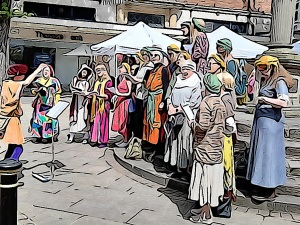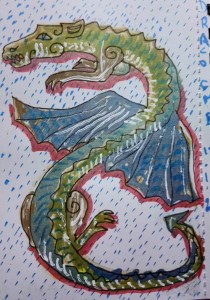We sang, we processed!
Newcastle under Lyme borough began in 1173 and this year is it’s 850th anniversary. They hold an Artisans market on the “stones” in Newcastle and we had been invited to take part.

Loud Mouth Women performed, we did a lovely set of songs for the 850th anniversary of Newcastle under Lyme. We were singing at the market cross and sang Greensleeves, Scarborough fair, Cockles and Mussels, La Para Deux, Fair and Tender Ladies among other songs, then we processed around the town centre with a children’s recorder group called the knights templars, a mediaeval minstrel band, freemen of the town and at the head Nello as the King.
Luckily the rain kept off until about half an hour after we finished x





